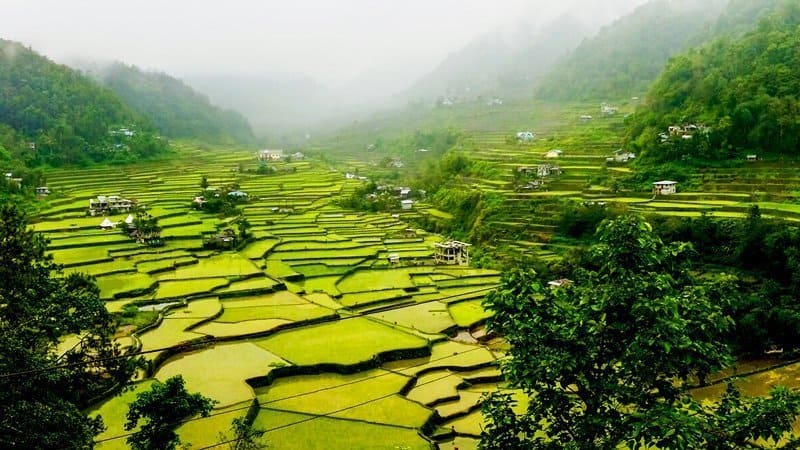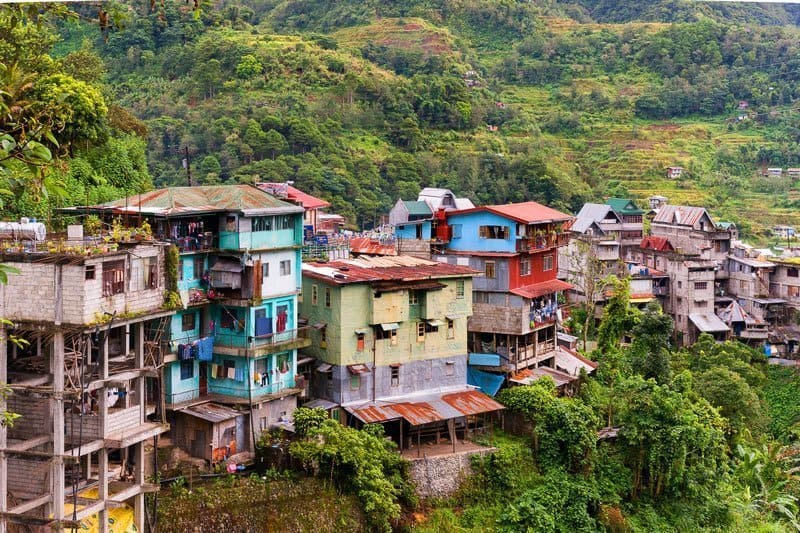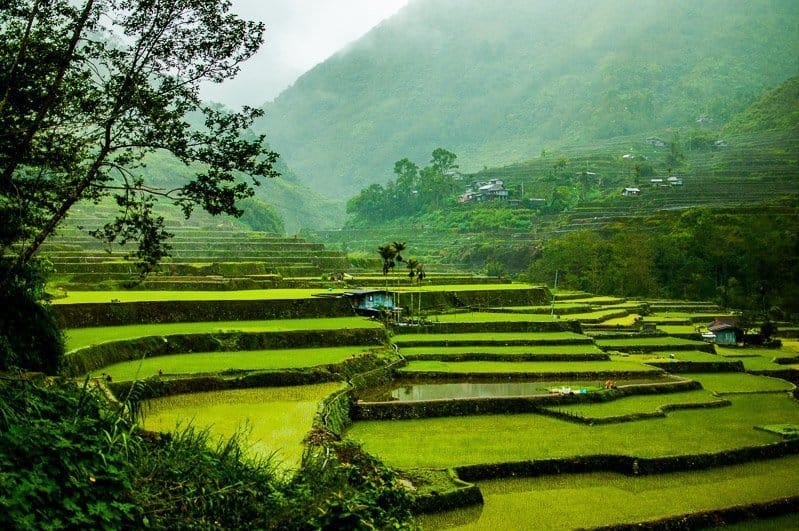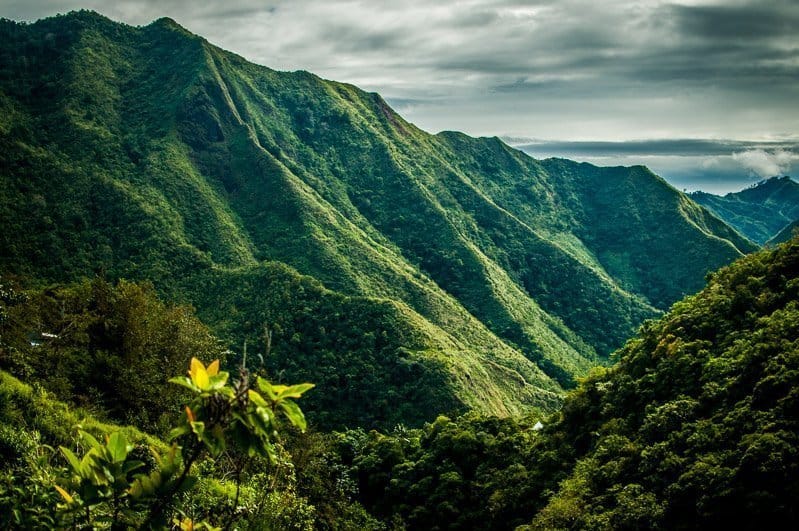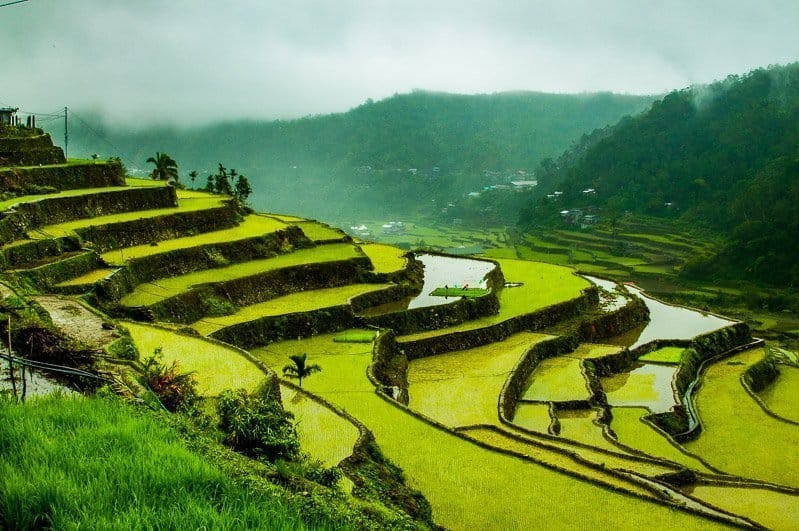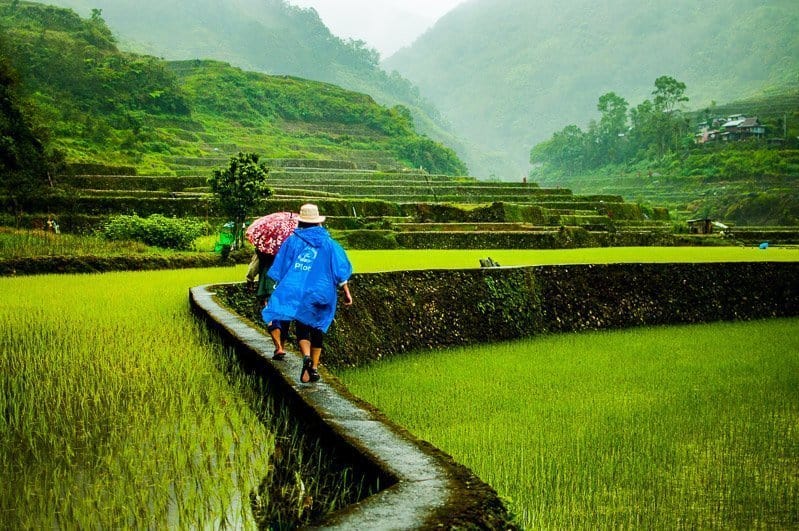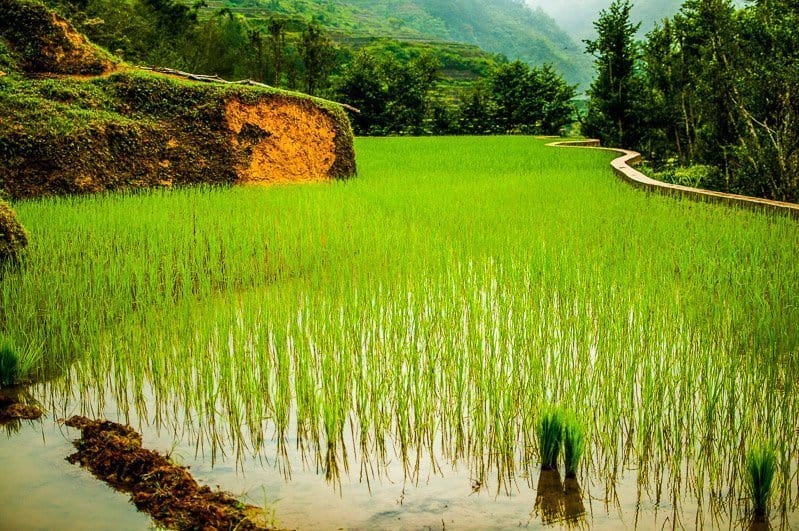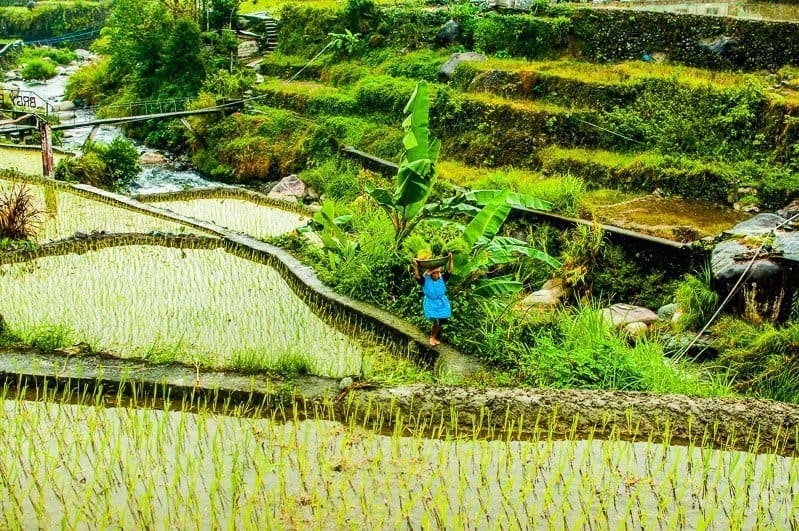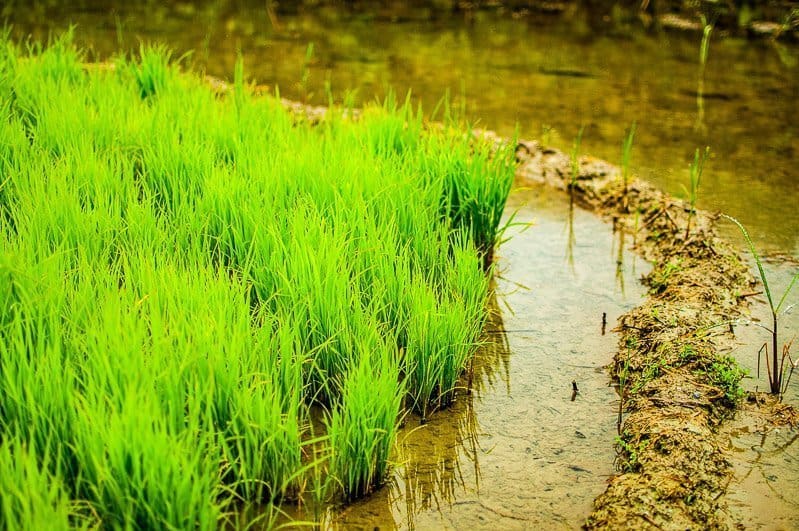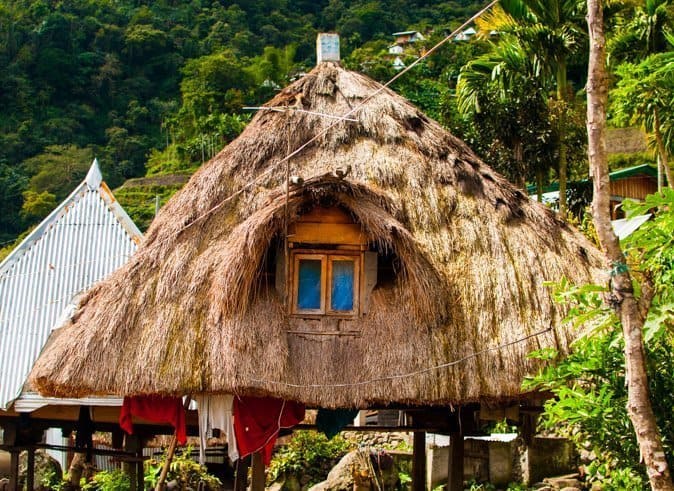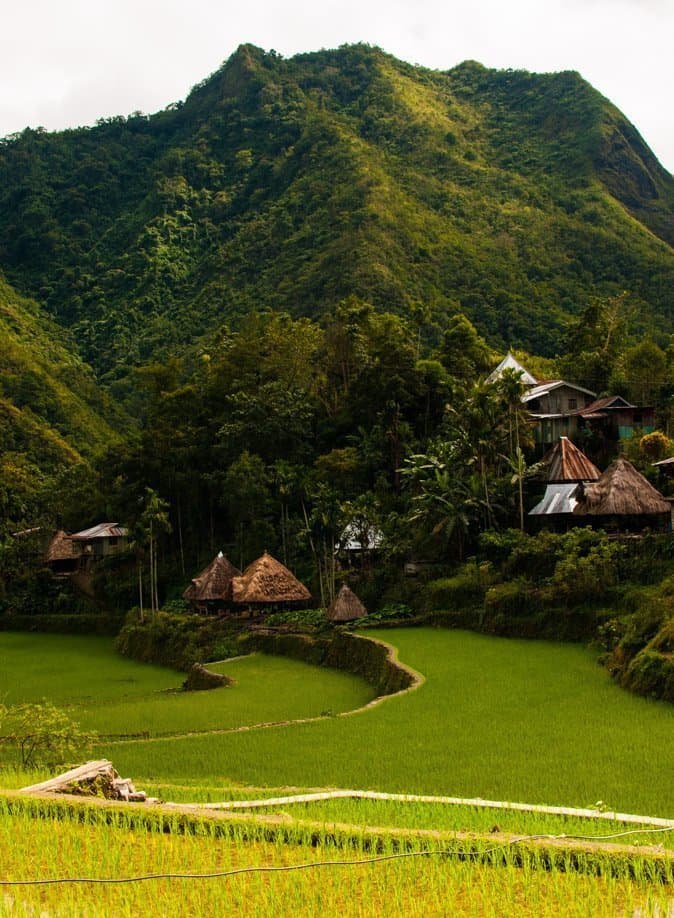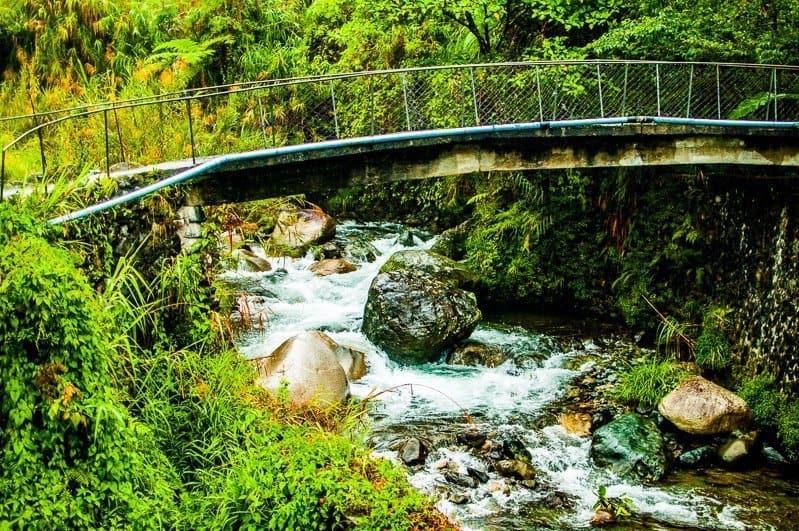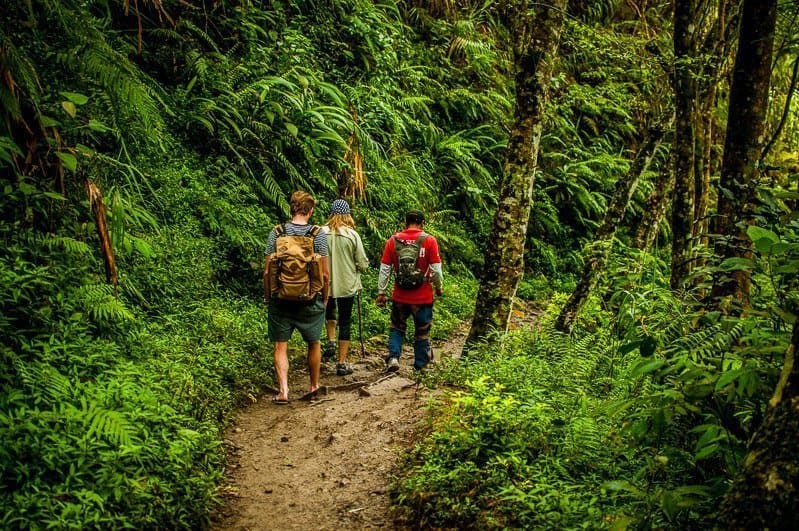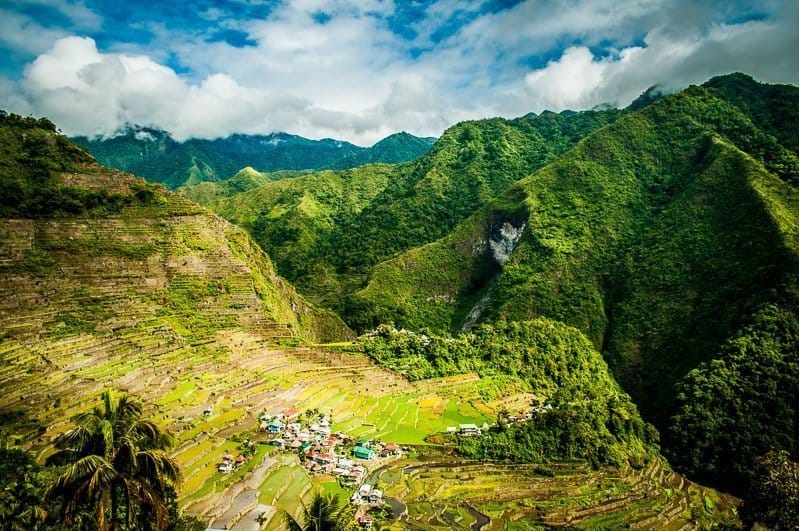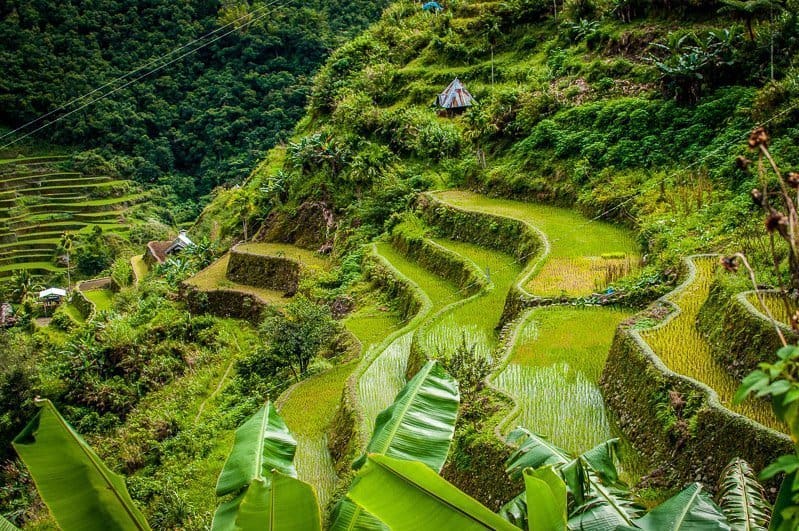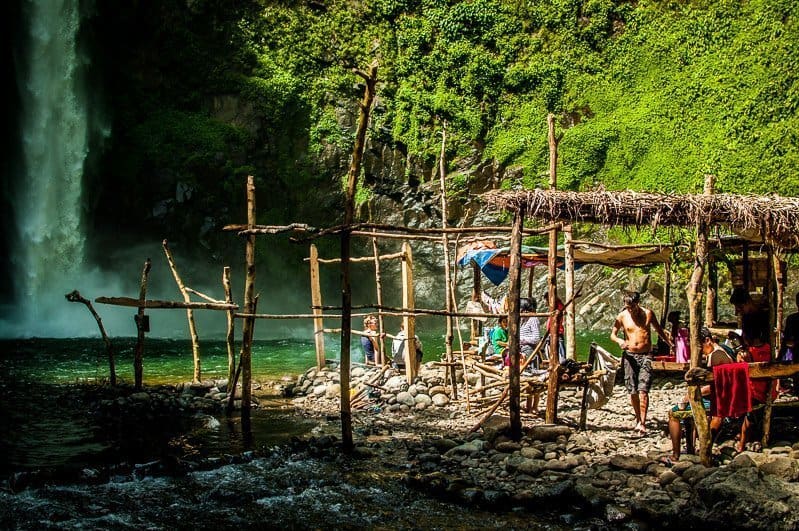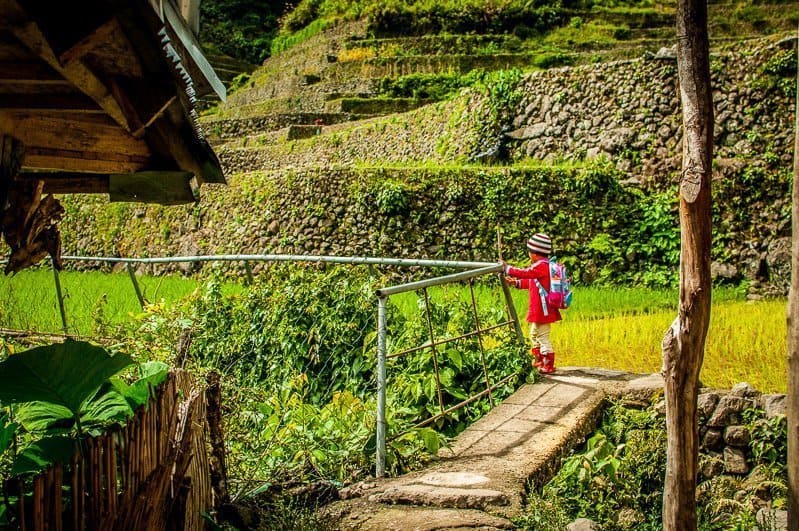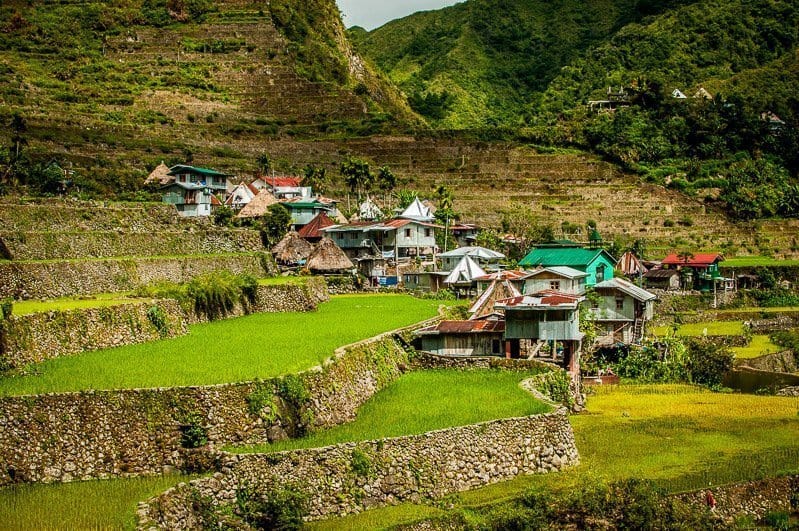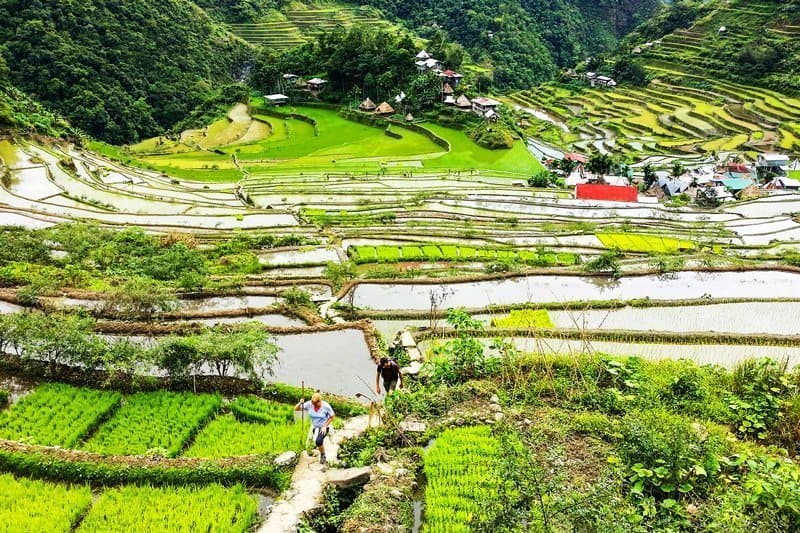For years we’ve dreamed of visiting the famed Banaue rice terraces of Ifugao in the Philippines. These rice terraces are commonly known as the “8th wonder of the world”. But, when we started researching our trip, stories of deterioration due to climate change, irresponsible tourism and the migration of young people made us hesitant to make the long and inconvenient journey.
However, since we were going to be in the Philippines anyway we decided to go and see for ourselves. After all, if these spectacular collaborations between man and nature were in danger of disappearing then that alone is a reason to go now.
We are so glad we did. It was just as beautiful as the photos we’d seen. It felt like we’d stepped back in time to catch a glimpse of life as it was centuries ago.
History of the Ifugao Rice Terraces
The construction and cultivation of the Banaue rice terraces began more than 2,000 years ago. The Ifugao tribes people carved the terraces into the hillside with their bare hands creating steps climbing thousands of feet into the sky.
They then planted the rice and created a system of harvesting water from the mountaintop forests which they used to flood the rice fields. Understandably they are considered to be one of the most impressive engineering feats of all time.
The terraces themselves and the art of cultivation have since been handed down from generation to generation. Still today rice is cultivated and harvested purely by hand by the same families from centuries ago. The tradition has also been maintained that all the communities work together on a rotating schedule at planting and harvest time.
This means that there has never been any need for hired hands. Sadly though this may change as many of the younger generations are now opting to move to the cities seeking a different life.
Thankfully, the Ifugao Rice Terraces Rehabilitation and Preservation Act was passed a few years back paving the way for restoration efforts and steps to sustainability.
Banaue Rice Terraces
The overnight bus from Manila brought us to the town of Banaue where we would spend 2 nights. The Banaue rice terraces are the best known but there are several others in the area that are arguably even more picturesque.
In fact, the Banaue rice terraces themselves are not even considered to be a UNESCO World Heritage Site. Their proximity to modern-day structures took them out of the running. There are some good viewpoints of the Banaue rice terraces on the edge of town but to really get a fully immersive experience of the area’s rice terraces it is best to venture further out.
Hapao Rice Terraces
Arriving at 7 am, after a grueling night on the bus, left us tempted to just crawl into bed for a few hours. But since we only had two nights in Banaue we instead drank some coffee and started checking out options for our first look at the rice terraces.
After chatting with one of the “travel agents” in our hotel we chose the Hapao rice terraces in Hungduan. They are just a short distance from the town of Banaue making for an easier first day. We were able to find another couple interested in visiting Hapao and together we negotiated a private shuttle and tour guide for 900 Pesos per person.
After a brief stop at a viewpoint of the Banaue rice terraces, we were dropped at a local shop on the side of the road and were introduced to our guide. His betel nut-stained teeth and weathered skin made him appear much older than his 40 years. However, he was friendly and agile and knew every inch of the Hapao rice terraces.
We enjoyed his guidance so much that we asked if he would be our guide for Batad the following day. He told us that would not be possible as guides are restricted to the areas of their heritage. Having grown up in Hungduan he could only guide us through Hapao.
Although the Hapao rice terraces are not as favored by tourists as Banaue and Batad they really are a sight not to be missed. The terraces are much wider and the terrain less steep and more sprawling than some of its counterparts making for a lovely leisurely walk with stunning photo ops.
For about ninety minutes we walked along the stone walls that create the divided terraces. We had to be careful to keep our balance and not slip down into the rice fields below. Eventually, we reached a hot springs pool. The pool is small and in the late afternoon, it fills with locals enjoying their daily baths. But at the time we arrived there were only a couple of other tourists there.
Tip: Bring a swimsuit and towel to enjoy a soak in the pool. Unfortunately, we weren’t told this fact and were only able to roll up our pant legs and soak our feet.
After our hot springs break we continued traversing the terrace walls, meeting with locals and watching and learning about rice cultivation. The other special thing about the Hapao rice terraces is the horseshoe layout. This allows for a looped walk that circles the small valley. The valley contains a church and school along with some of the traditional homes giving a glimpse into local life.
Batad Rice Terraces
On our second day, we chose to visit the Batad Rice Terraces.
It takes about 90 minutes by jeepney to go from Banaue to the Saddle which is the starting point for the hike to the Batad rice terraces. You can do this journey in a few ways. The top choices are Jeepney (either private hire or by tour) or tricycle (cheaper but much less comfortable). If you’re really fit (and crazy) you can take a public jeep to the Batad junction and then walk the 3 km uphill.
Keep in mind that from the Saddle it is another 3 km hike just to get to the top of the rice fields. Then you have to hike down into the valley, cross it and then climb back up.
Many people actually choose to stay in Batad overnight. We have to say that when we arrived at the rice terraces we were a bit disappointed that we hadn’t planned to do the same. There are a few rustic but fairly comfortable-looking accommodation choices (see below). The thought that we would miss out on waking up to the spectacular views overlooking the rice terraces was almost heartbreaking.
Alas, instead we had opted for a guided full-day tour from 8:30 am-5 pm. We started by hiking from the Saddle down to Rita’s Mountview Inn & Restaurant and pre-ordered a late lunch for our return. After a cold drink, our adventure really began.
The terrain of the Batad rice terraces is much steeper and the valley much narrower than the sprawling Hapao creating a very different scene and a much harder hike. Since we were starting at the top of the mountain the first half of our journey was downhill as we descended into the valley far below.
Tip: We decided to rent the walking sticks offered at the Saddle and found them really helpful.
After about 2 1/2 hours we reached the valley and continued across it toward the Tappiya Falls. The trail down to the foot of the falls is quite steep and slippery so careful trekking is required. But oh is it worth it!
The weather was a bit grey and wet so we weren’t quite hot enough for more than a foot paddle. However, on a hot day, these falls would be bliss. As it was there were several brave souls playing in the chilly water.
Feeling rejuvenated after a rest and a snack we were ready to begin the long hike back uphill. I’m not going to lie, it was tough. Good muscle stamina and cardio are definitely helpful. Not saying you have to be an elite athlete by any means but being in decent physical shape does make it much more enjoyable.
The landscape of the Batad rice terraces is very different from Hapao. But is equally stunning and maybe even more awe-inspiring when you consider these terraces were built by hand on this steep terrain. After a leg and lung-burning climb back up to Rita’s, we were almost giddy with excitement at the thought of an ice-cold drink and a delicious lunch. We were not disappointed.
But we were not quite done, there was still the hike back up to the Saddle.
Exhausted and with a huge sense of accomplishment and awe at what we had seen we jumped back in the jeepney to Banaue and pretty much fell into bed for a couple of hours before heading in search of dinner.
How to Get to Banaue
As mentioned earlier, getting to Banaue is not super convenient. It is inland far north of Manila and nowhere near the beautiful islands and beaches the Philippines are so known for. But again it is well worth the effort.
If coming from Manila you really only have one choice, the 9-hour overnight Ohayami bus. In our experience, it is not a luxury bus by any means and tends to get overbooked. We highly suggest advance reservations of at least a week if possible.
If you are organized and book far enough in advance to select your seats definitely avoid the very back row. It is five cramped seats across that do not recline and we can tell you from experience it’s nearly impossible to sleep here.
There are also makeshift “seats” that fold out along the center aisle which would be even worse than the back row. From what we can tell these are for the people that didn’t book in advance and seemed to be mainly locals.
Tips: Bring something to use as a blanket and pillow if you want to get any sleep. Snacks are also a good idea although they do make a late-night stop for food and drinks.
Where to Stay in Banaue
In Banaue, there are quite a few accommodation options but they are all fairly basic. In our opinion, homestays are usually a well-priced and comfortable favorite. We suggest The Banaue Homestay and the Bogah Home Stay as good choices.
In Batad there is much less choice but we were told by fellow travelers that Ramon’s Native Homestay is a good pick for a unique place to stay.
If none of these are available or aren’t what you’re looking for we always recommend Agoda for Asia accommodations.
When to Go to Banaue and Batad Rice Terraces
Due to changes in the climate and also in the culture plus the somewhat rotating schedule of the various terraces it isn’t as easy as it once was to declare the best time of year to go.
To see the fields at their greenest go a little after planting season. To see them in their golden glory go just before harvesting. Between harvest time and planting time the fields are barren and some would say the least beautiful time to go but in our opinion, if that’s all your schedule allows for it’s still worth the trip.
Generally speaking, planting season is early in the year making with harvesting being done late summer to fall. However, we would suggest you do some research on the specific areas you are going to for the up-to-date planting schedule.
We went in early March and although it wasn’t yet at its greenest and was nowhere near the golden hues of harvest time I think you’ll agree it was beautiful.
Tours of Banaue and Batad Rice Terraces
There are tour companies that you can book with in advance but from our experience, it’s not necessary and is usually more expensive. If you want to have a guided tour there are plenty of options. You will find “travel agents” everywhere. They will greet you at the bus, or you’ll find them hanging around the restaurants and hotels and most of the staff will also set you up.
Tip: Just be sure but take time to get the details and pricing before deciding and if you can round up some other travelers you can get a better deal for a group. And as always in Southeast Asia there is usually room to negotiate.
You can also just hire a trike or jeepney to take you to the start of the terraces and attempt the walk yourself but we found it was better to have a guide. Without one, you’d be taking a chance of not seeing the best spots and viewpoints and even getting a bit lost.
We actually had a couple of pretty fit young guys join our little group at the hot springs telling tales of slipping down hills and walking lost for hours before we rescued them. Plus the tour guides are all locals and this is how they make a living so we were happy to contribute.
What to Bring to Banaue
Light backpack: You will want to carry water, snacks, camera and also have a place for your layers when you don’t need them.
Water bottle: We are really appalled when we travel at the overuse of plastic disposable water bottles. It’s true you need to buy bottled water in many countries but we try to minimize our footprint by buying large bottles and refilling our own. You can also get water bottles with a built-in filter like the LifeStraw Go which allows you to use local tap water.
Layers: The weather is much cooler here in the mountains and is also quite wet at times so definitely bring layers for warmth that you can peel off when you warm up from the hike. Also a lightweight water-resistant top layer.
Good Shoes: You will need decent shoes for the rice terrace hikes. I really like the multi-purpose Merrell hiking water shoes as they are good for so many activities and are also water resistant.
Lightweight towel: If you plan to dip in the hot springs or waterfall a light & quick drying microfiber towel is good to have.
Hat: A hat is always good to have no matter what the weather. On a sunny day it helps keep you cool by shading your head and if it’s raining it will keep your head dry.
Snacks: We brought some fruit, nuts and a couple of chocolate bars for energy.
Camera: This is a given I’m sure but as good as your mobile phone camera may be this is an experience worthy of something a bit better if you have it. We did bring our bulky DSLR but actually left it in our backpack much of the time in favor of the lighter and easier to carry GoPro. We love our GoPro Hero4 and don’t regret a single dollar we spent on it.
Final Thoughts of Banaue and Batad Rice Terraces
If you plan to go to the Philippines definitely try to save a few days to head north to the Banaue rice terraces. We know it may be hard to tear yourself away from the paradise of places like Palawan and Boracay but we promise you will not be disappointed. The Banaue and surrounding rice terraces are an extraordinary sight steeped in history and culture that shows the tenacity and ingenuity of man. Also, they are a great example of balanced travel as you combine nature, exercise, tourism, culture and education…something we know that followers of Live Dream Discover love to experience!
Pin It For Later
Disclaimer: This article contains some affiliate links but all of our opinions and recommendations are based on our personal experience. If you click through to any of the links to purchase a product we may receive a small amount at no additional cost to you. Thank you for supporting our business!

Born in England, Sarah developed her wanderlust at a young age as she traveled around Europe with her parents. As a young adult she spent every penny she could on experiences as opposed to possessions. Eventually she found a way to earn a living doing what she loved: traveling, writing and capturing images of the wondrous world we live in. When not on the go Sarah enjoys time in her “sometimes home” of Vancouver.

